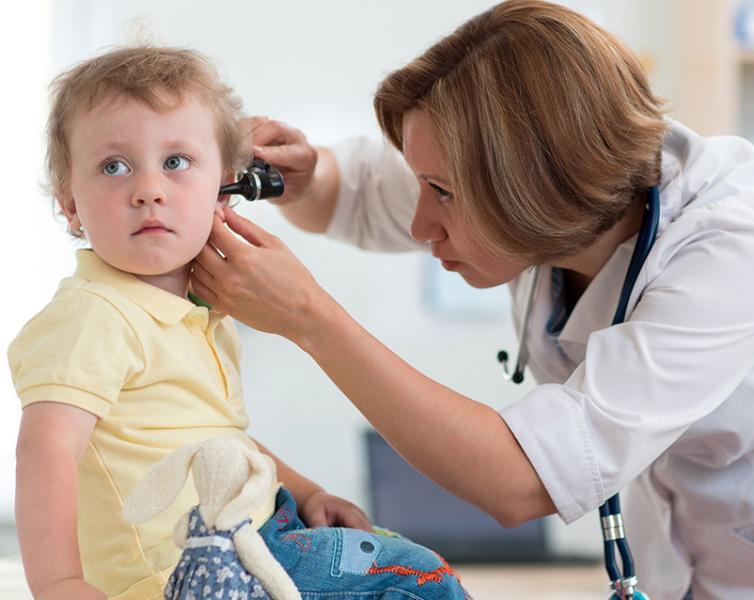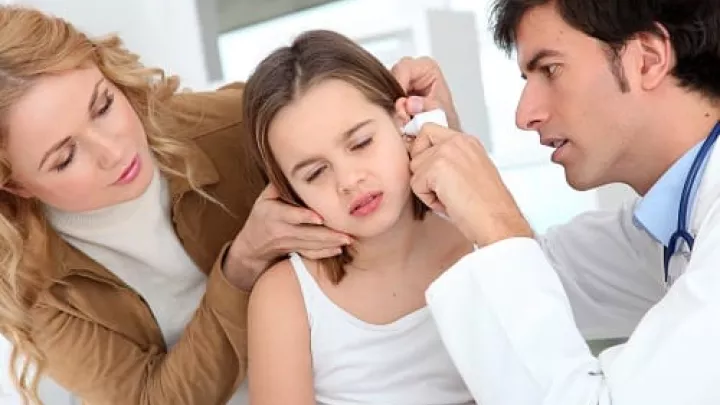What is middle ear fluid and how can this impact my child?
Middle ear fluid versus an ear infection: What’s the difference?
Middle ear fluid (also known as otitis media with effusion) is the presence of fluid in the middle ear without& signs or symptoms of an ear infection. Ear fluid occurs in the middle ear and is not caused by swimming and bathing. Ear fluid can be caused by a cold, ear infection, everyday nasal congestion, Eustachian tube dysfunction or may even be unknown in origin.
An ear infection (also known as acute otitis media) is an active infection that often presents with symptoms (such as ear pain, fever, inflammation) and requires medical treatment.
How common is ear fluid in children?

Approximately 90% of children have ear fluid before they reach school age; however, it often goes undetected.
After an ear infection has cleared, many kids will have fluid that can remain for weeks at a time and can sometimes become re-infected.
What are the signs that my child has ear fluid?
- Difficulty hearing (if your child frequently says “what”, turns the volume up on the TV, etc.)
- Speech delay
- Failed school hearing screening
- Balance problems
Many times your child may show no signs or symptoms.
When should I do something about my child’s ear fluid?
The first step is to see a pediatrician.
If your child fails a hearing screening at the pediatrician’s office and/or school, they may be referred to an audiologist.
If fluid is present for more than three months and does not go away on its own, this is usually considered a chronic problem and you should ask for a referral to an ear, nose and throat (ENT) specialist.
How is ear fluid treated?
- This is something that should be further discussed with the ENT specialist.
- Acute ear infections are usually treated with antibiotics.
- Often times, fluid will resolve on its own. If it persists, the ENT may recommend ear tubes.
What are ear tubes for kids?
- Ear tubes (also known as ventilation tubes or pressure equalization tubes) are tiny cylinders that are inserted into the eardrum. They create an opening or an airway in the eardrum, allowing fluid to drain and preventing future fluid buildup.
- Ear tubes are one of the most common pediatric surgeries performed in the United States.
What happens if ear fluid is left untreated? Your child could experience:
- Speech and language delays
- Learning delays
- Listening difficulties at school, which can sometimes be mistaken as attention disorders
- Behavioral problems
- Higher chance of recurrent ear infection
Kids may be more at risk for developing ear fluid if they:
- Are exposed to cigarette smoke
- Attend daycare
- Bottle feed as opposed to breastfeeding
- Use a pacifier past six months of age
- Have been exposed to radiation near the head and neck area
Kids may also be at risk if they have certain medical conditions, such as:
- Cleft palate
- Down syndrome
- Immune deficiencies
References:
Abo el-Magd, E. , Elsayed Yousef, Y. , El-Asheerr, O. and M. Sobhy, K. (2015) Risk Factors of Otitis Media with Effusion in Children.International Journal of Otolaryngology and Head & Neck Surgery 4, 303-308. doi:10.4236/ijohns.2015.44052.
Rosenfeld, R. M., Shin, J. J., Schwartz, S. R., Coggins, R., Gagnon, L., Hackell, J. M., … Corrigan, M. D. (2016). Clinical Practice Guideline: Otitis Media with Effusion (Update).Otolaryngology–Head and Neck Surgery,154(1_suppl), S1–S41. https://doi.org/10.1177/0194599815623467


